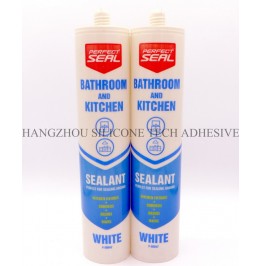Acidic sealants are commonly used for their strong adhesion and chemical resistance, but their low pH levels pose significant corrosion risks to metal substrates. Understanding these interactions is critical for preventing structural damage, especially in applications involving steel, aluminum, or copper. Improper handling or material selection can lead to premature failure, costly repairs, and safety hazards.

Acidic sealants contain active ingredients like acetic acid, phosphoric acid, or sulfonic acids, which react with metal surfaces through hydrolysis and oxidation. For example, when applied to steel, these acids break down the protective oxide layer, exposing the base metal to further degradation. Aluminum reacts vigorously with acids, forming hydrogen gas and soluble aluminum salts that weaken the material over time.
In humid environments, acidic residues create electrolytic cells on metal surfaces. Dissimilar metals (e.g., steel and copper) in contact with acidic sealants accelerate galvanic corrosion, where one metal acts as an anode and the other as a cathode. This process is exacerbated by moisture, which conducts ions and speeds up metal dissolution. Even small amounts of residual acid can trigger long-term damage if not neutralized.
Steel is highly vulnerable to acidic sealants, as acids dissolve iron oxides and promote rust formation. In industrial settings, acidic sealants used near steel beams or machinery can cause pitting corrosion within weeks. Studies show that pH levels below 4.0 significantly increase the rate of steel degradation, making neutralization or protective coatings essential for long-term durability.
Aluminum reacts with acids to form aluminum salts and hydrogen gas, leading to surface blistering and loss of structural integrity. Aircraft-grade aluminum, commonly used in construction, is particularly sensitive to acidic exposure. Even diluted acidic sealants can etch aluminum surfaces, reducing their fatigue resistance and increasing the risk of crack propagation under stress.
Copper reacts with acids to produce copper salts, which stain surfaces and weaken joints. In plumbing systems, acidic sealants near copper pipes can cause greenish corrosion products, indicating active degradation. Brass, an alloy of copper and zinc, is equally susceptible, with zinc components dissolving preferentially and creating porous structures prone to leakage.
Proper cleaning and priming are vital before applying acidic sealants to metals. Remove grease, rust, and existing coatings using alkaline cleaners or mechanical abrasion. Apply a corrosion-inhibiting primer compatible with both the metal and the sealant. For steel, zinc-rich primers create a sacrificial layer that protects against acid attack. Aluminum surfaces benefit from chromate conversion coatings, which passivate the metal and reduce reactivity.
After sealant curing, rinse the metal surface with a neutralizing solution (e.g., baking soda and water) to deactivate residual acids. Use pH-neutral cleaners for maintenance to avoid reactivating corrosion processes. In high-humidity environments, consider applying a protective wax or epoxy coating over the sealed joint to create a barrier against moisture and acidic vapors.
Regularly check sealed metal joints for signs of corrosion, such as discoloration, blistering, or flaking. Pay attention to crevices and hidden areas where acidic residues may accumulate. Use a pH indicator strip to test surface acidity; readings below 7.0 indicate incomplete neutralization and require immediate action. Document inspection dates and findings to track degradation trends.
Maintain stable temperature and humidity levels in areas with acidic-sealed metals. High humidity accelerates corrosion by keeping acidic residues active. Install dehumidifiers or ventilation systems in enclosed spaces like basements or industrial facilities. For outdoor applications, use weather-resistant sealants or cover metals with protective sheathing to shield them from rain and acidic pollutants.
By understanding the corrosion risks associated with acidic sealants and implementing proactive mitigation strategies, users can extend the lifespan of metal structures and avoid costly repairs. Always consult material compatibility charts and follow manufacturer guidelines to ensure safe and effective application.
Copyright 2019 by Hangzhou Silicone Tech Adhesive Co., Ltd. All rights reserved.
Bathroom Sealant | Acrylic Sealant | Dow Corning 795 | Aquarium Sealant | Dow Corning 732 | Clear Silicone Sealant | Polysulfide Sealant | Glazing Sealant | Mirror Sealant | IG Sealant
Powered by Onepound